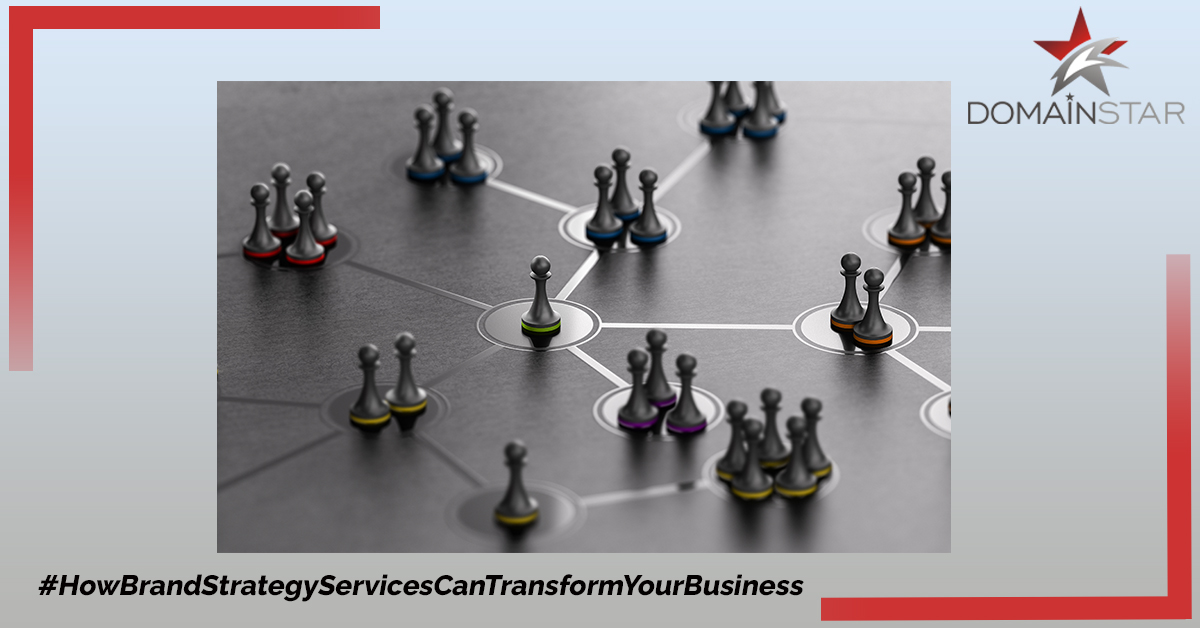When your e-commerce site loses sales, it feels like a personal affront. After all, you’ve worked hard on the details to make your site attractive and useful. If it’s not getting any visitors or making sales, there’s clearly something wrong—yet what is it? Given how many e-commerce sites are being built, it seems like there should be more success stories than failure. As an agency that has developed a lot of ecommerce websites, I often find myself wrestling with this problem. You’re not alone in this conundrum.
Here are 10 possible reasons why your ecommerce site may not be selling:
1. Lack of Targeted Traffic
Lack of targeted traffic can negatively impact your ecommerce sales in several ways. Targeted traffic refers to visitors who are actively seeking and interested in the products or services you offer. Without targeted traffic, your ecommerce site may attract visitors who have no interest in your products, resulting in low conversion rates. Low conversion rates may, in turn, negatively impact your revenue and profitability.
Additionally, targeted traffic can enhance the engagement and loyalty of your customers. Targeted traffic can help your ecommerce site build brand recognition and attract repeat visitors, who may become loyal customers.
Therefore, to maintain and increase your ecommerce sales, it is important to implement targeted marketing strategies, such as search engine optimization (SEO), pay-per-click (PPC) advertising, and social media marketing, to attract relevant and interested traffic to your site.
2. Poor Website Design and User Experience
Poor website design and user experience can have a significant impact on the conversion rates and sales of an ecommerce site. Here are a few ways bad website design can negatively affect your ecommerce sales:
High Bounce Rate: A poorly designed ecommerce site can lead to a high bounce rate, which refers to the percentage of visitors who leave your site after viewing only one page. A high bounce rate indicates that visitors find your site unappealing, difficult to navigate, or irrelevant to their needs, resulting in lost opportunities for sales.
Slow Load Times: Consumers expect fast load times, and a one-second delay in page load time can lead to a 7% reduction in conversions. Slow load times can be caused by a variety of factors, such as large image sizes, plugins, code errors, or a slow web host. This can lead to frustrated visitors abandoning the site, which negatively affects sales.
Poor Navigation and Site Layout: An ecommerce site that is difficult to navigate may result in visitors getting lost or unable to find what they are looking for. Poor site layout and organization may also cause visitors to overlook important information, resulting in lost opportunities for sales.
Mobile Responsiveness Issues: With mobile devices accounting for over 50% of internet usage in 2021, having a responsive website design is crucial. If your ecommerce site is not mobile-responsive, it can lead to a poor user experience, high bounce rates, and lost sales.
Lack of Trust and Credibility: Website design can also affect the perceived trust and credibility of an ecommerce site. A website that appears outdated, unprofessional, or insecure may deter visitors from making purchases. On the other hand, a visually appealing site with trust signals like customer reviews, product ratings, and secure checkout badges can enhance trust and encourage conversions.
Overall, a poor website design and user experience can negatively affect your ecommerce sales by deterring potential customers, reducing engagement and conversions, and denting your online reputation. Therefore, it is essential to invest in a professional and user-friendly ecommerce website design to maximize your sales opportunities.
3. Ineffective Product Descriptions
Product descriptions play a crucial role in convincing customers to make a purchase. If your descriptions are vague, lack important details, or are not persuasive, it may deter customers. Invest time in crafting compelling and informative descriptions that highlight the benefits and features of your products.
4. Limited Payment Options
Customers prefer convenient and secure payment options. If your ecommerce site offers limited or complex payment methods, it can lead to cart abandonment. Consider integrating popular payment gateways and providing multiple payment options to accommodate customer preferences.
5. Lack of Trust and Credibility
Building trust is essential for online businesses. If your site lacks trust signals such as customer reviews, secure payment badges, or a professional-looking design, customers may hesitate to make a purchase. Display customer testimonials, secure checkout symbols, and clear return policies to enhance trust.
6. Insufficient Product Images
High-quality product images are crucial for customers to evaluate and visualize the products. If your site has low-resolution or insufficient product images, it could impact sales negatively. Invest in professional product photography and provide multiple images from different angles to showcase your products effectively.
7. Hidden or Excessive Shipping Costs
Unexpected shipping costs or unclear shipping policies can deter customers from completing their purchase. Be transparent about shipping costs and consider offering free shipping or flat-rate pricing to make the purchasing process smoother.
8. Lack of Social Proof
Social proof, such as customer reviews, ratings, and testimonials, can significantly impact the decision-making process of potential buyers. If your site lacks social proof, it may raise doubts about the quality or credibility of your products. Encourage customers to leave reviews and prominently display positive feedback on your site.
9. Weak Marketing and Promotion Efforts
If you are not actively marketing and promoting your products, it can lead to low sales. Utilize various marketing channels, such as social media, email marketing, content marketing, and influencer collaborations, to raise awareness and drive traffic to your ecommerce site.
10. Competitive Pricing and Value Proposition
If your prices are significantly higher than your competitors or the value you provide is unclear, customers may choose alternative options. Conduct market research to set competitive prices and clearly communicate the unique value your products offer.
These are just a few potential reasons why an ecommerce site may not be generating sales.
If you have any further questions or would like more specific advice tailored to your ecommerce site, feel free to get in touch with us. We are experts in eshop development and digital marketing services. Inquire today either by phone or email and one of our representatives will happily assist you!
FAQs - Frequently Asked Questions
Getting clicks but no sales can be frustrating, but it’s a common challenge that many businesses face. Here are a few possible reasons why you may be experiencing this issue:
Targeting the Wrong Audience: It’s possible that the clicks you’re receiving are coming from an audience that is not genuinely interested in your products or services. Make sure your marketing efforts are targeted towards your ideal customer profile, and that your messaging and advertising align with their needs and interests.
Poor Landing Page Experience: Your landing page is where visitors land after clicking on your ads or links. If your landing page does not effectively communicate the value of your offering or if it’s confusing or difficult to navigate, visitors may leave without making a purchase. Optimize your landing pages to provide a clear, compelling message and a smooth user experience.
Lack of Trust or Credibility: If your website or business lacks trust or credibility, visitors may be hesitant to make a purchase. Ensure that your website looks professional, displays customer testimonials or reviews, provides clear contact information, and uses secure payment methods. Building trust and credibility is crucial in convincing visitors to become customers.
Pricing or Value Perception: If your pricing is perceived as too high or the value of your products or services is not effectively communicated, visitors may be reluctant to make a purchase. Highlight the unique value proposition of your offerings and consider adjusting your pricing strategy if necessary.
Ineffective Call to Action: A weak or confusing call to action (CTA) can lead to lost sales opportunities. Ensure that your CTAs are clear, compelling, and prominently displayed on your website, encouraging visitors to take the desired action, such as making a purchase.
Customer Service or Support Issues: If customers have a negative experience with your customer service or encounter issues during the purchase process, it can lead to abandoned sales. Ensure that you provide prompt and helpful customer support and make the purchasing process as smooth as possible.
Competition or Market Factors: It’s important to consider external factors such as competition, market trends, or economic conditions that may impact sales. Evaluate your competitors’ offerings, pricing, and marketing strategies to ensure you are effectively positioning yourself in the market.
It’s important to identify and address these potential issues to improve your conversion rate. Analyzing data, conducting user testing, and seeking feedback from your customers can help you better understand why clicks are not translating into sales. With this information, you can make targeted improvements to optimize your website and marketing strategies for better conversion rates.
Generating traffic and attracting new customers is essential for the success of any ecommerce website. Here are some strategies to consider that can help you get more customers for your ecommerce:
SEO Optimization: Optimizing your website for search engines can improve your website’s visibility and attract more relevant customers to your online store. Focus on optimizing your website’s content, titles, meta descriptions, and product descriptions to increase your chances of ranking high on search engine results pages.
Paid Advertising: Consider investing in online advertising channels such as Google Ads, Facebook Ads, and Instagram Ads to reach more potential customers. You can use these platforms to target customers based on demographics, interests, and behavior, increasing your chances of reaching a relevant audience.
Social Media Marketing: Social media platforms such as Facebook, Instagram, and Twitter offer great opportunities for ecommerce businesses to engage, connect, and build relationships with potential customers. Use social media marketing to showcase your products, offer incentives, and create a sense of community around your brand.
Email Marketing: Email marketing is a cost-effective way to reach out to potential customers and promote your products. Use email marketing campaigns to offer discounts and promotions, highlight new products, and encourage customers to take action.
Content Marketing: Creating valuable and informative content related to your products can help attract new customers. Consider creating a blog, videos, or other types of content that offer useful information and answering questions your target audience may have.
Referral Programs: Encourage your existing customers to refer their friends and family to your ecommerce store. Offer incentives such as discounts or free products to customers who successfully refer new customers.
Influencer Marketing: Partner with social media influencers and bloggers in your industry to tap into their audience and attract new customers to your ecommerce store.
Improve Customer Experience: A great customer experience can be a powerful marketing tool on its own. Ensure that your website navigation, design, and functionality are seamless, easy-to-use, and optimised for mobile devices. Offer fast and reliable shipping and excellent customer support to earn customer loyalty and repeat business.
Remember, the key to getting more customers to your ecommerce store is using various marketing strategies and optimizing your website for conversion. Continually track your results, analyze your data, and make improvements as needed. Be patient and persistent, and you’ll be sure to attract more customers to your ecommerce store over time.





